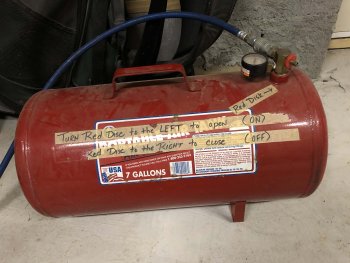johnnyjump
Well-Known Member
Getting ready to build a new propane forge from an air-tank I recently purchased (see photo). The dimensions are 21" long by 10" wide. According to the online calculator, this yields a volume of 1650 cubic inches.
I plan on using a 1 3/8" Goede Stainless Steel Foundry/Forge Burner, (https://www.amazon.com/dp/B019X6E7L...olid=1DFYE0KTHE6CE&psc=1&ref_=lv_ov_lig_dp_it) I am thinking this will require 2 burners and wondering if anyone would like to comment on my plan so far.
As far as design, I really like the plans I picked up from a man named Reece at his website: https://althoffwoodshop.com/building-a-propane-forge/. Wondering what your thoughts are on this design for knife making. Thanks!
I plan on using a 1 3/8" Goede Stainless Steel Foundry/Forge Burner, (https://www.amazon.com/dp/B019X6E7L...olid=1DFYE0KTHE6CE&psc=1&ref_=lv_ov_lig_dp_it) I am thinking this will require 2 burners and wondering if anyone would like to comment on my plan so far.
As far as design, I really like the plans I picked up from a man named Reece at his website: https://althoffwoodshop.com/building-a-propane-forge/. Wondering what your thoughts are on this design for knife making. Thanks!

